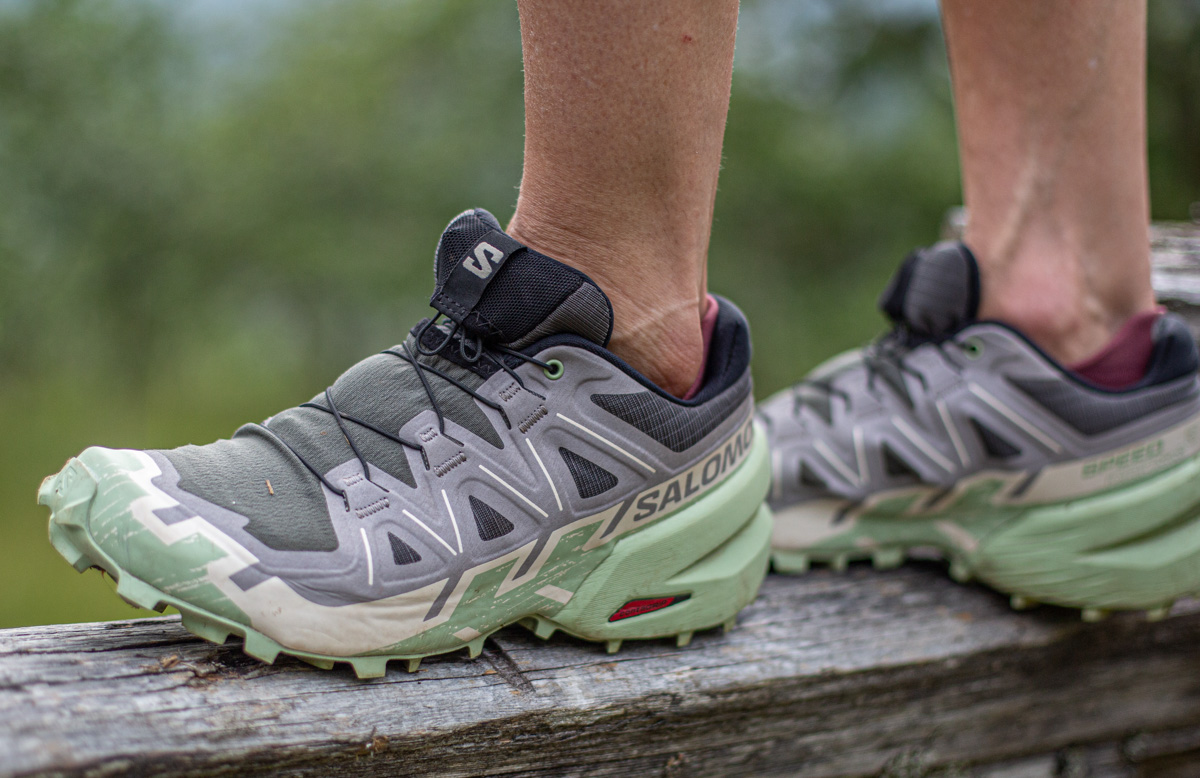
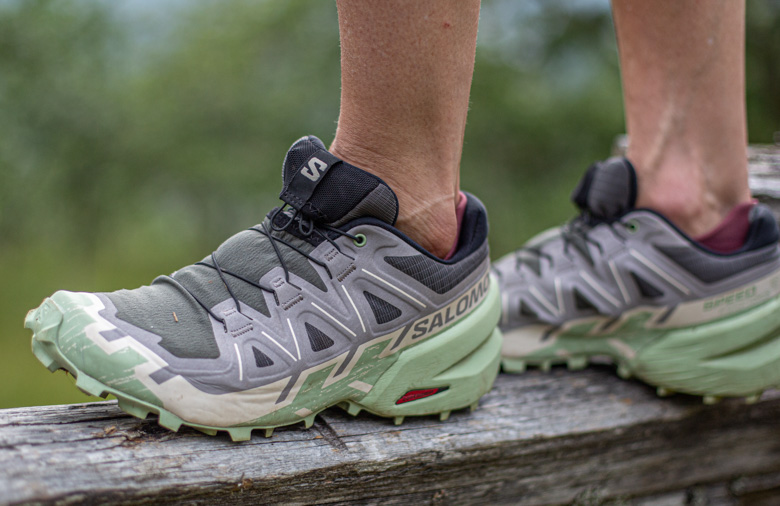
Price: $145
Weight: 1 lb. 2.5 oz.
Cushioning: Moderate
Drop: 10mm
What we like: Grips well onto soft trails (including mud and snow), is comfortable right out of the box, and has proven durable over many miles of tough use.
What we don’t: Overbuilt for flat trails and roads, not the most breathable, and Quicklace system makes it tough to personalize fit.
See the Women's Speedcross 6 See the Men's Speedcross 6
The latest version of Salomon’s Speedcross raises the bar for trail running on muddy, snowy, and soft terrain. The real magic lies in the outsole: With its thick yet flexible rubber and aggressive arrow-shaped lugs, the Speedcross 6 impressed me across a variety of wet, slippery trails in British Columbia’s coastal forests. Add in moderate cushioning and a snug, secure fit, and the shoe handled everything from steep mountain bike descents to short stints on pavement without missing a beat. While it’s a bit overbuilt for long runs on flat terrain, the Speedcross 6 is a stellar choice for runners who thrive on rugged, unpredictable trails. Below, I break down my experience with the Speedcross 6. For a broader look at the market, check out our guide to the best trail running shoes. best trail running shoes.
When I’m on the hunt for a trail running shoe, traction and stability are always at the top of my list. I run on all kinds of unpredictable terrain, so I need something I can rely on—and the Salomon Speedcross 6 delivers. Outfitted with Salomon’s reputable Contragrip outsole and 5 millimeter arrow-shaped lugs, these shoes bite into mud, packed dirt, clay, and even snow without issue. The wide lug spacing helps keep the sole from clogging up, and I was especially impressed with how easily they sliced through layers of pine needles, which was helpful on steep forest descents. The lugs also grip well on rock faces, though wet rocks still gave me some trouble (as they do for most trail shoes, to be fair).

The lug placement adds to the grip, too. I like how they wrap over the toe bumper for better traction on steep or loose climbs. They also extend over the outer edges of the sole, which helps on off-camber trail sections. I often find myself running down bike trails with steep, sloped sides, and the Speedcross grips them well, letting me charge ahead without second-guessing my footing.
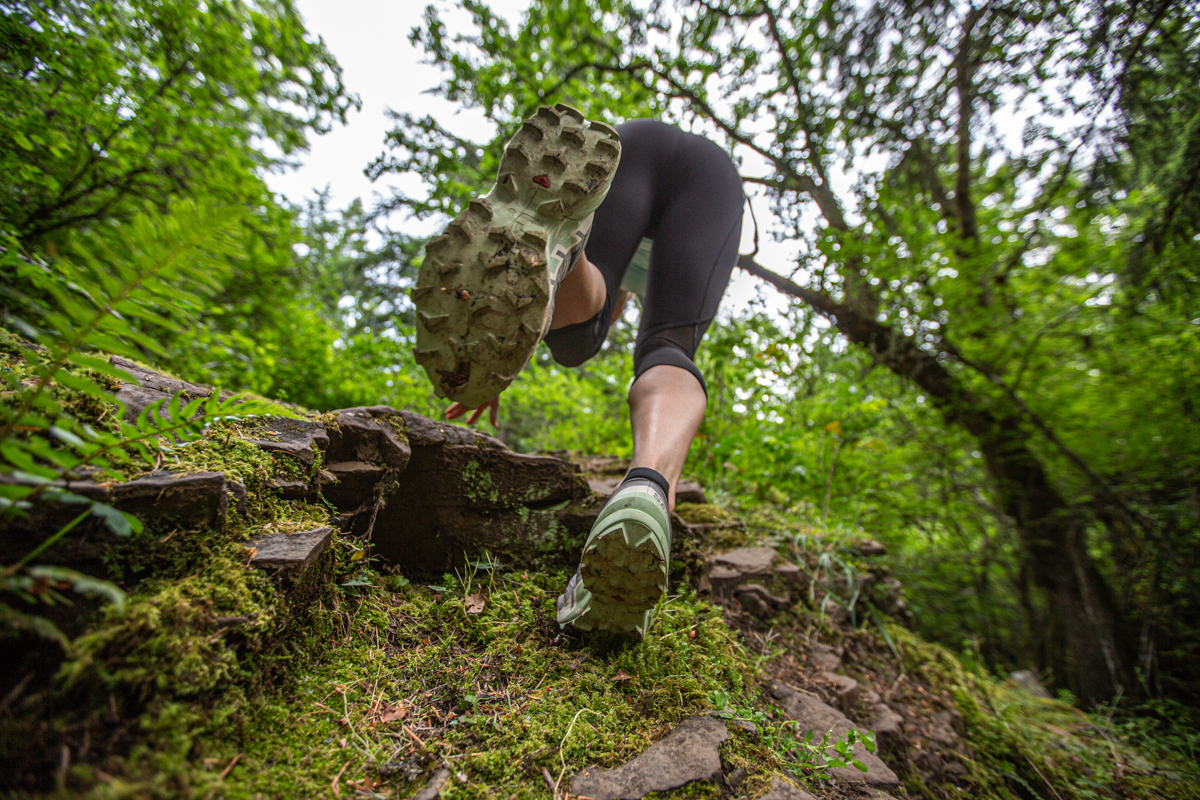
While the term “sock-like” gets thrown around a lot with running shoes, in the case of the Speedcross 6, it actually fits. The Sensifit lace overlay is the driving reason why: this stretchy outer layer hugs the foot snugly when the laces are tightened down, though, as noted below, the Quicklace system can be tricky when trying to dial in the fit. But the locked-in feel translates to a feeling of stability and control while running, and there's very little movement within the shoe. Even when I landed on uneven terrain or at odd angles, my foot stayed put. And despite the relatively high stack height, I still felt connected to the ground.
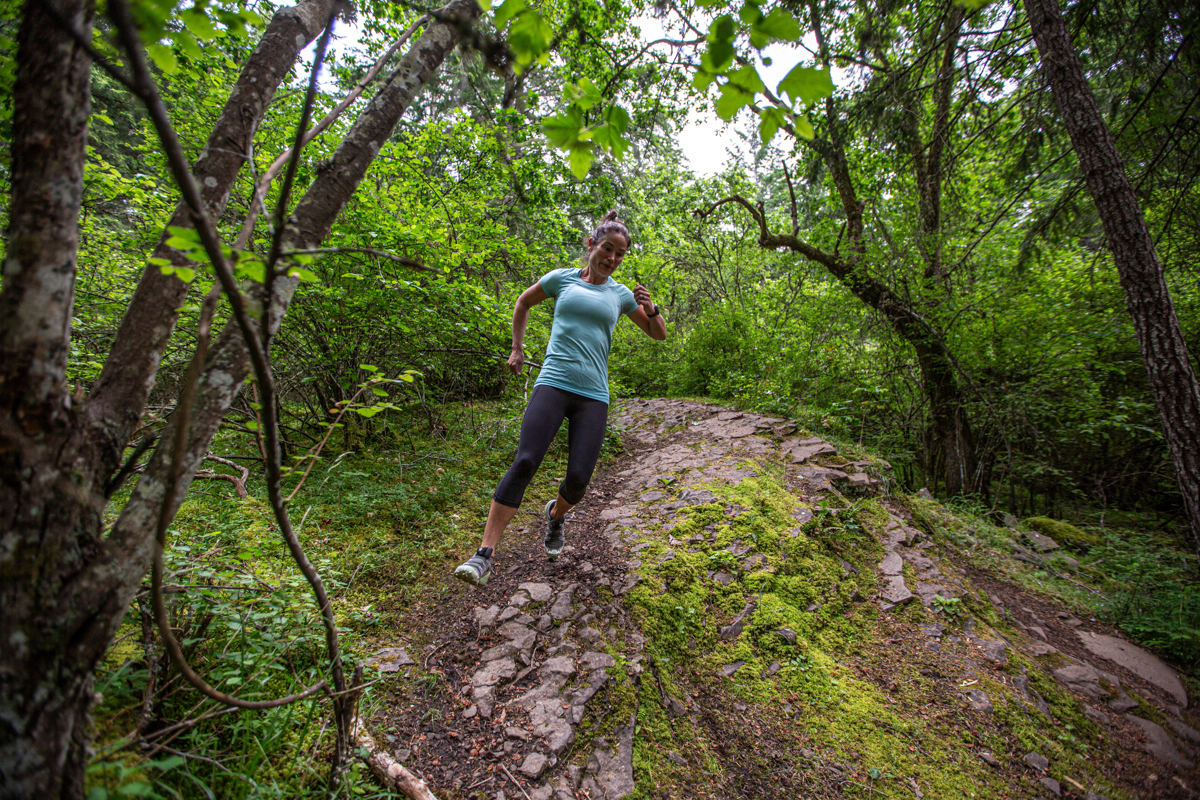
The Speedcross 6 is outfitted with a generous amount of underfoot cushioning: 22 millimeters in the forefoot and 32 millimeters in the heel. Salomon's EVA EnergyCell midsole is bouncy and comfortable underfoot. These shoes don't have a rock plate, but I didn't experience any discomfort running over the occasional rocky section of trail. If anything, it kept the shoes flexible and responsive, and I could still feel the ground despite the high cushioning. The high heel makes these shoes a better fit for heel-strikers who need the extra support, but that wasn't a deal-breaker for me either. That said, I wouldn't call the Speedcross 6 cushioned enough for dedicated road running, and the lugs, though soft, are overkill for pavement. I’ve gotten away with a few kilometers of running on asphalt while getting to and from the trail without any issues, but I wouldn't push them further than that.
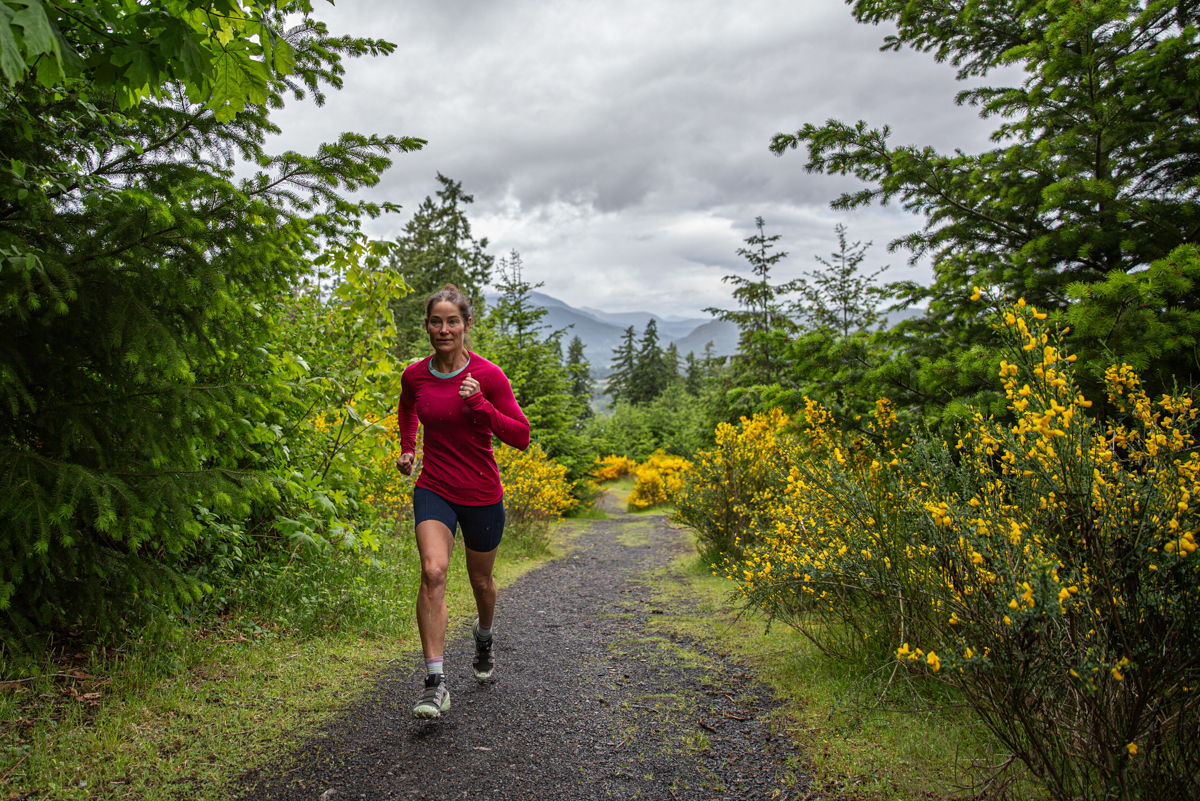
For such a burly-looking shoe, the Speedcross 6 is surprisingly comfortable. In fact, I found them quite light and nimble on the trail. Like I mentioned above, the cleat-like lugs are soft enough for short stints on the road when needed. I had no trouble wearing short socks since the tongue didn’t rub or cause discomfort, and I have yet to experience any hot spots or blistering. My only complaint is breathability: While this latest version is more ventilated than previous models—thanks to the mesh upper—it still runs warmer than other trail shoes I’ve worn. Since I'm normally reaching for this shoe when heading out on rainy runs, breathability hasn't been a deal-breaker, but I'd opt for a more well-ventilated shoe for mid-summer trail runs.
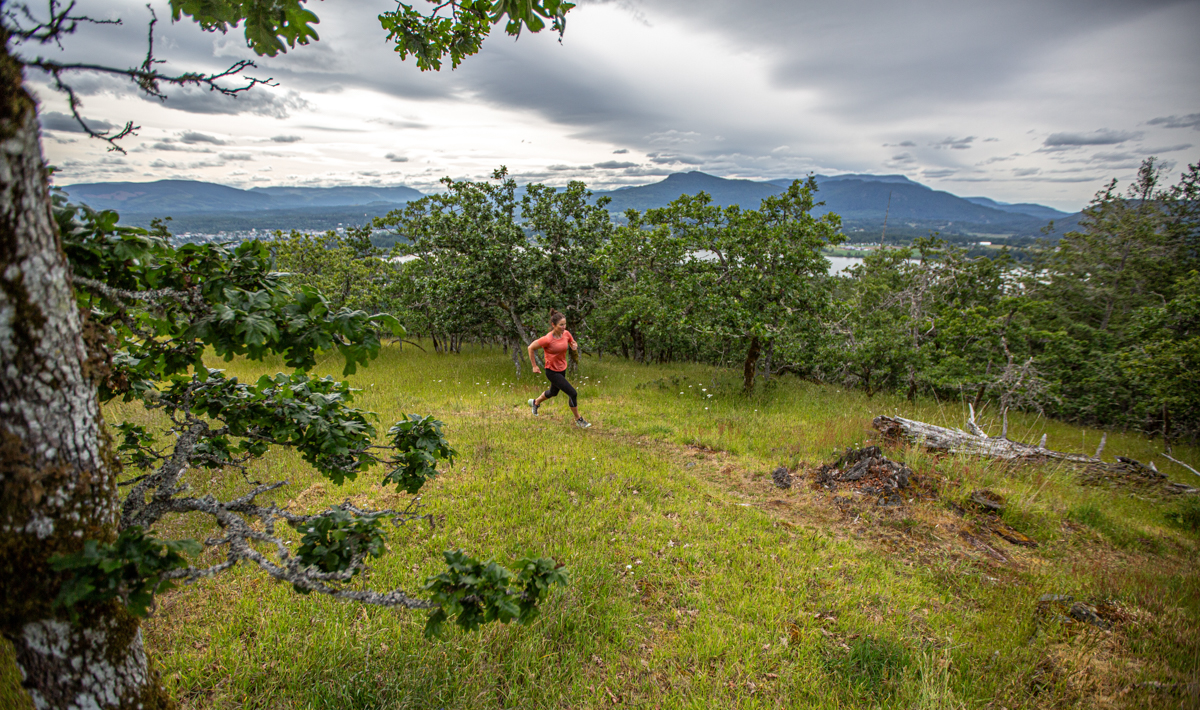
Weighing in at 1 pound 2.5 ounces for the women’s version I tested, the Speedcross 6 trims a few ounces off its predecessor. That said, it lands on the heavy end of the market: Salomon’s all-around Genesis comes in slightly lighter at 1 pound 0.5 ounces, and La Sportiva’s technical Bushido III also has the Speedcross 6 beat at 1 pound 1 ounce. La Sportiva's similarly intentioned Akasha II is a touch lighter at 1 pound 2.3 ounces, but there’s no sense in splitting hairs—or ounces. The Speedcross 6 doesn’t feel hefty by any means. If anything, the extra weight adds a sense of durability and confidence, especially on rough terrain.
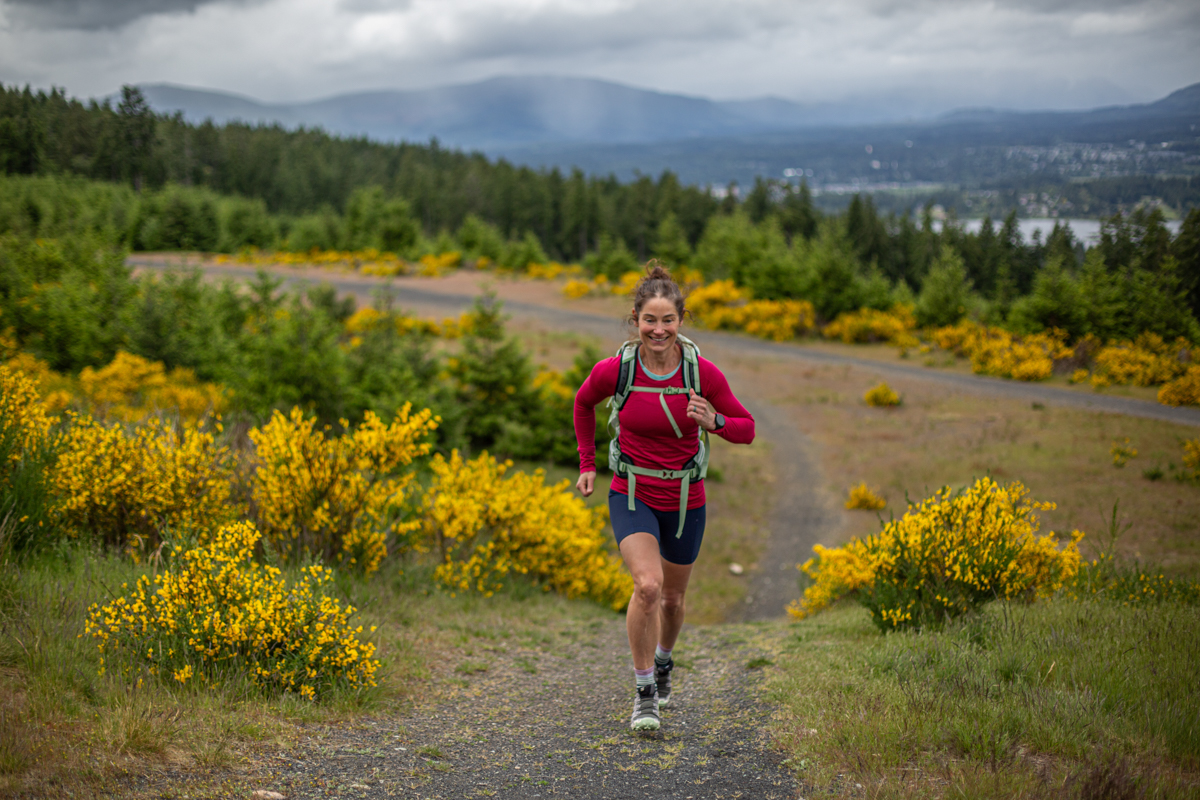
Overall, the Speedcross 6 has proven to be a tough, long-lasting shoe. There are a few design choices that boost its durability, including well-bonded overlays, a solid rubber toe bumper, and minimal stitching. Most of the stitching reinforces the laces, and after consistent use, there’s no sign of fraying. The Quicklace system still works smoothly, and the pull tab tucks easily into the tongue’s lace garage. On top of that, the mesh upper and gusseted tongue do a great job of keeping debris out, which is especially useful when running on sandy trails. Truth be told, I'm tough on my shoes, but I have no doubt that the Speedcross will last me many more miles to come.
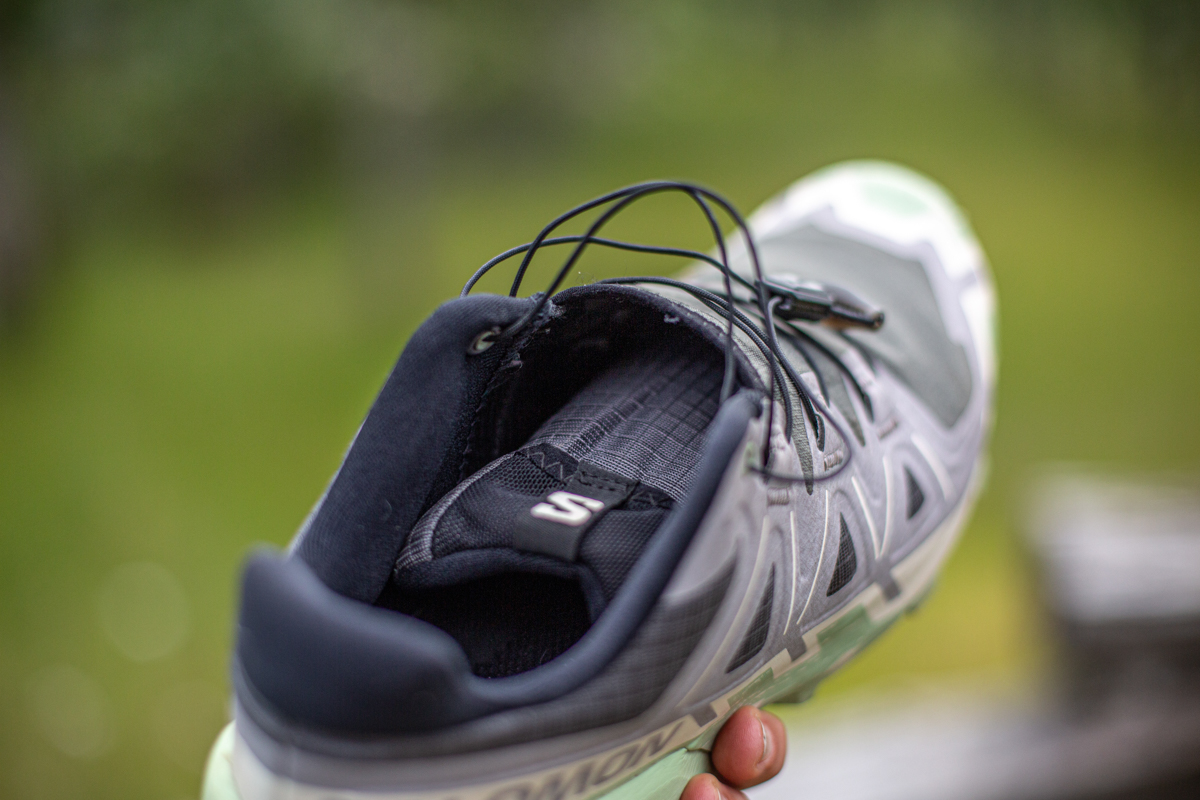
I’ve found Salomon’s fit can vary between models, but I went with my usual women’s size 8.5 in the Speedcross 6, and it fit like a glove right out of the box. I was a bit concerned the forefoot might be too narrow since I have a bunion on my left foot, which can make sizing tricky, but that worry disappeared on my first run. The upper has just enough stretch to feel snug without being restrictive. And, if needed, Salomon also offers a wide version of the Speedcross 6. My only minor gripe is with the Quicklace system: It doesn’t offer as much fine-tuned adjustment as traditional laces it holds tension well and stays secure.
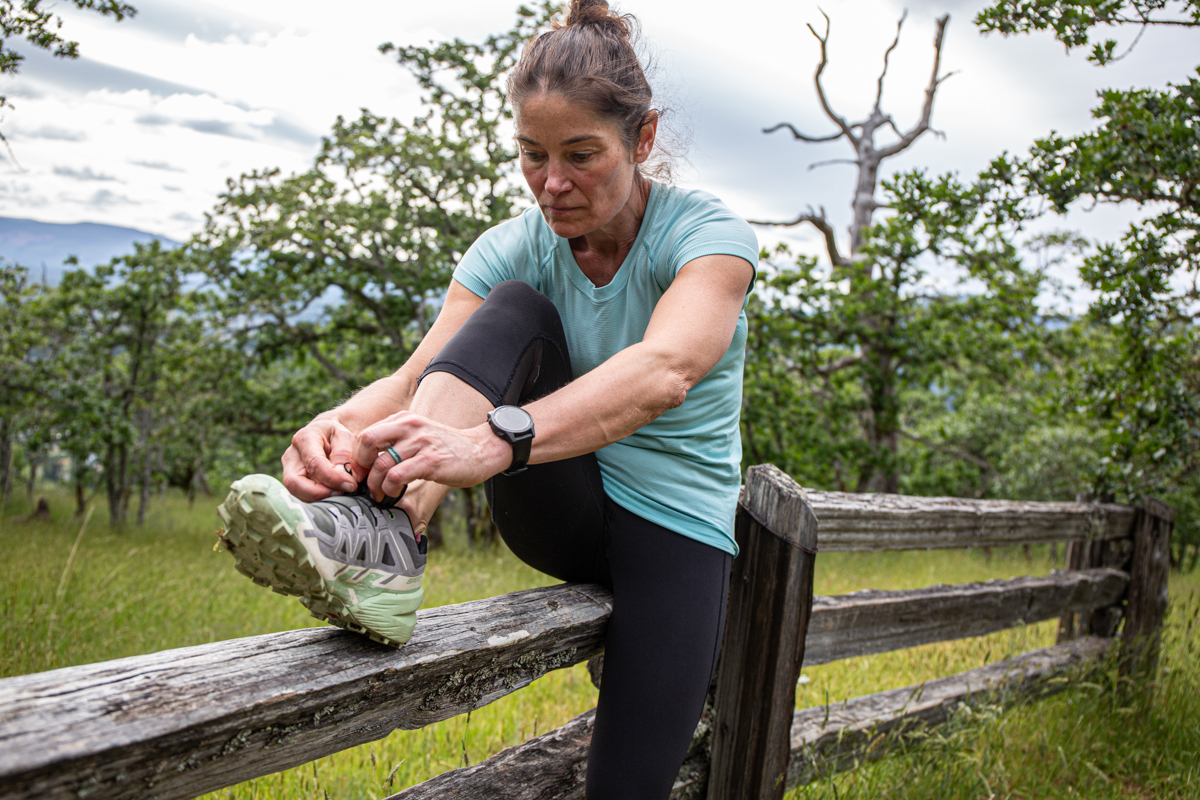
I tested the women’s version of the Speedcross 6, but Salomon also makes a men’s version at the same price. Aside from colorways and weight—the men’s averages 1 lb. 5.0 oz.—the two are essentially identical. Both versions are available in wide fits for those who need more room in the forefoot. There’s also a Gore-Tex version for $20 more: The waterproof membrane is ideal for wet, muddy conditions, but will surely come at the cost of some breathability. For more on this topic, see our article: Do You Need Waterproof Hiking Shoes?
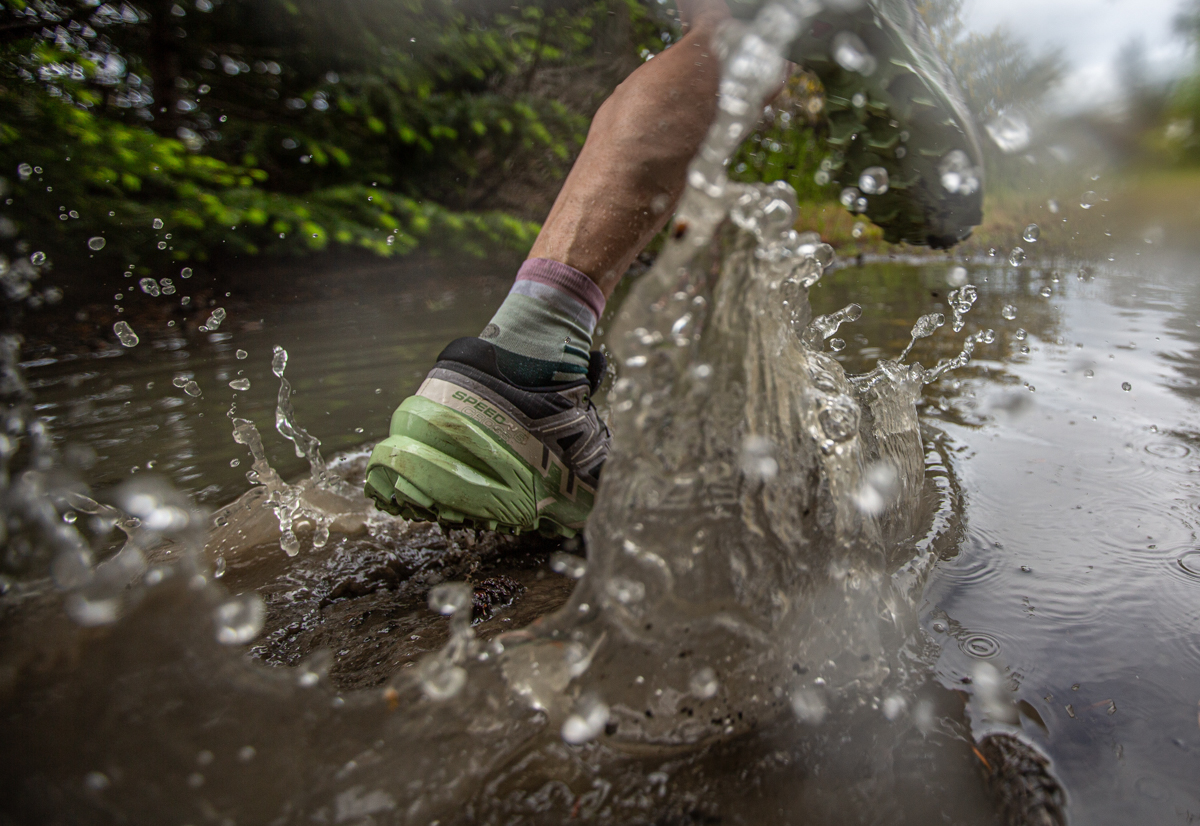
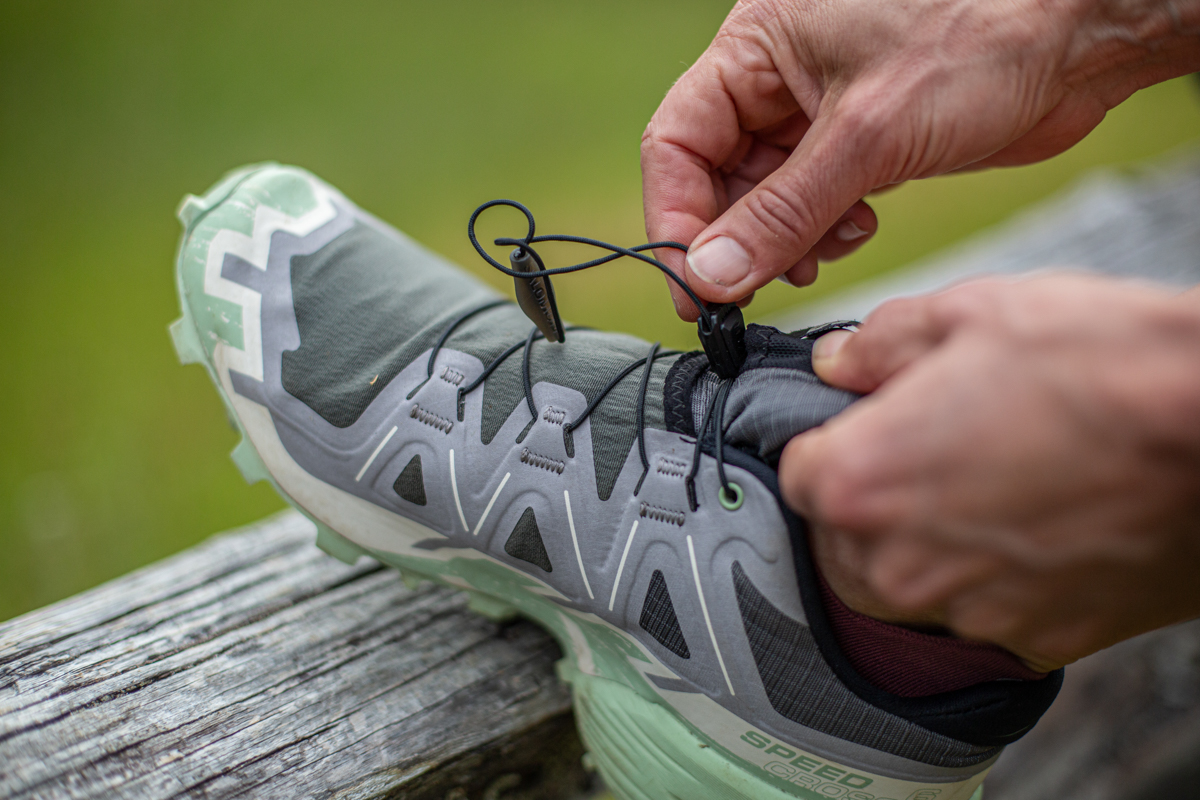
| Shoe | Price | Weight | Stack Height | Drop | Lugs |
|---|---|---|---|---|---|
| Salomon Speedcross 6 | $145 | 1 lb. 2.5 oz. | 22mm forefoot / 32mm heel | 10mm | 5mm |
| Salomon Genesis | $150 | 1 lb. 0.5 oz. | 26.3mm forefoot / 34mm heel | 8mm | 4.5mm |
| Salomon S/Lab Ultra | $240 | 1 lb. 5.9 oz. | 20.5mm forefoot / 28.5mm heel | 8mm | 3.5mm |
| La Sportiva Bushido III | $145 | 1 lb. 1.6 oz. | 13mm forefoot / 19mm heel | 6mm | 4mm |
| La Sportiva Akasha II | $175 | 1 lb. 2.4 oz. | 25mm forefoot / 31mm heel | 6mm | 4.5mm |
While the Speedcross 6 is our favorite trail shoe for running in muddy and soft terrain, there’s no shortage of alternatives to consider. From within Salomon’s line, the Genesis and S/Lab Ultra strike us as viable substitutes for those looking for a more all-around shoe. The Genesis has more underfoot cushioning than the Speedcross 6, a lower 8 millimeter drop, and similarly-aggressive 4.5 millimeter lugs, which makes for a more versatile shoe. If you're on the hunt for a shoe that's at-home on mellow terrain, but can keep up on rocky or off-camber trails when needed, the Genesis is a great choice. And if you want a more elite option, the S/Lab Ultra has some more premium touch points, such as a durable yet breathable Kevlar upper and a Profeel rock plate with EVA midsole for serious underfoot protection and bounce. But unless you’re planning on spending over 10 hours at a time on the trail, you can save about $100 by opting for the Speedcross 6 or Genesis. Plus, neither the Genesis or S/Lab Ultra are our first choice for sloppy terrain—the Speedcross’s deeper lugs and aggressive build are better suited for mud and snow.

Moving outside of Salomon’s portfolio, La Sportiva’s Bushido III has proven to be a superb technical shoe thanks to its super grippy outsole and lightweight build. The Bushido is more mountain-ready than the Speedcross with climbing shoe-like traction that is better suited for rocky terrain than muddy trails. Its mesh upper is also more air-permeable, making it the more breathable option. That said, the Bushido is similarly overbuilt for smooth paths and high-mileage days. The La Sportiva Akasha II has more in common with the Speedcross 6, including deep, soft 4.5 millimeter lugs that bite easily into soft surfaces. Still, the Akasha doesn’t grip off-camber terrain quite as well, with lugs that stop short of the shoe’s edge. Toe-strikers might have better luck with the Akasha as it has a slightly shorter heel, but in our opinion, the Speedcross 6 is the more capable shoe (at a lower price to boot), earning it a spot near the top of our list of favorite trail running shoes.
Back to the Salomon Speedcross 6 Review See Our Trail Running Shoe Guide